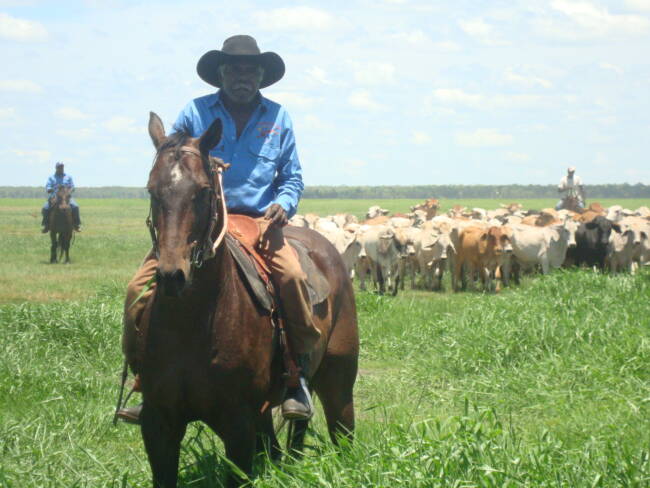Pastoral
The pastoral industry is iconic in the Northern Territory. Up until the early 1970s, the Northern Territory cattle industry depended on cheap Aboriginal labour for its success.
It was Aboriginal people who built the fences, dug the bores and tended, mustered and drove the cattle. It was common to find them 'paid' with meager rations of flour, tea, sugar and tobacco. Aboriginal people also had extensive knowledge of the land which was vital to the operation of grazing enterprises.
In 1968 Aboriginal stock workers won the right to award wages and conditions equal to white workers. It was a hollow victory. With the mechanisation of the industry, including sub-divisional fencing, modern trapping yards, road transport replacing droving and the advent of helicopter mustering, pastoralists had already begun to do away with Aboriginal labour. The Aboriginal camps which had been pools of cheap labour were no longer needed and many people were forced off the stations.
Under the Land Rights Act, Aboriginal people cannot claim pastoral land that is leased to someone else. However, they can claim the land if they themselves own the lease. A number of Aboriginal organisations run pastoral leases in the Northern Territory and have claimed ownership of the land under the Land Rights Act.
Indigenous Pastoral Program
The Indigenous Pastoral Program was developed by the Northern and Central Land Councils in 2003 to increase Aboriginal-managed pastoral production and improve rangelands management on Aboriginal land. The strategy involves joint action by partner agencies including the Indigenous Land Corporation, the NT Government, the NT Cattleman’s Association and the NT Department of Education, Employment and Workplace Relations (DEEWR).
Since its inception programme staff, within the NLC region, have successfully negotiated 13 Pastoral Land Use Agreements worth over $10 million to traditional owners in infrastructure development and lease payments. This investment has created over 40 jobs and put up to 40,000 head of cattle back on Aboriginal pastoral land.
The wider result of this is greater access and engagement by traditional owners with their land.


